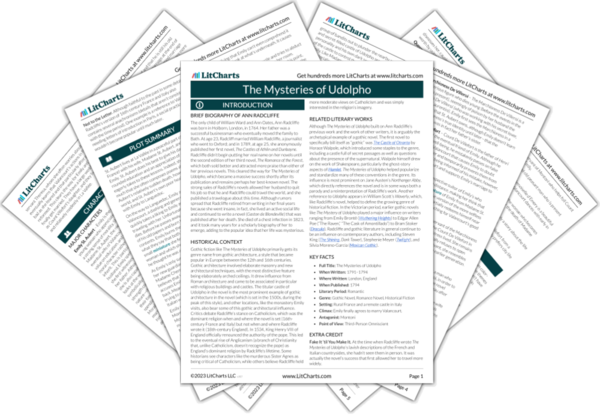Dorothée strongly suggests that the Marquis De Villeroi poisoned the Marchioness (due to the strange blackness on her face), but although even the doctor suspected something unusual, no one had enough evidence to prove it. Dorothée’s story shows again shows how men had more power in marriage, along with the potential to abuse it. The situation with the Marquis and Marchioness seems to parallel whatever happened with Montoni and Signora Laurentini.
